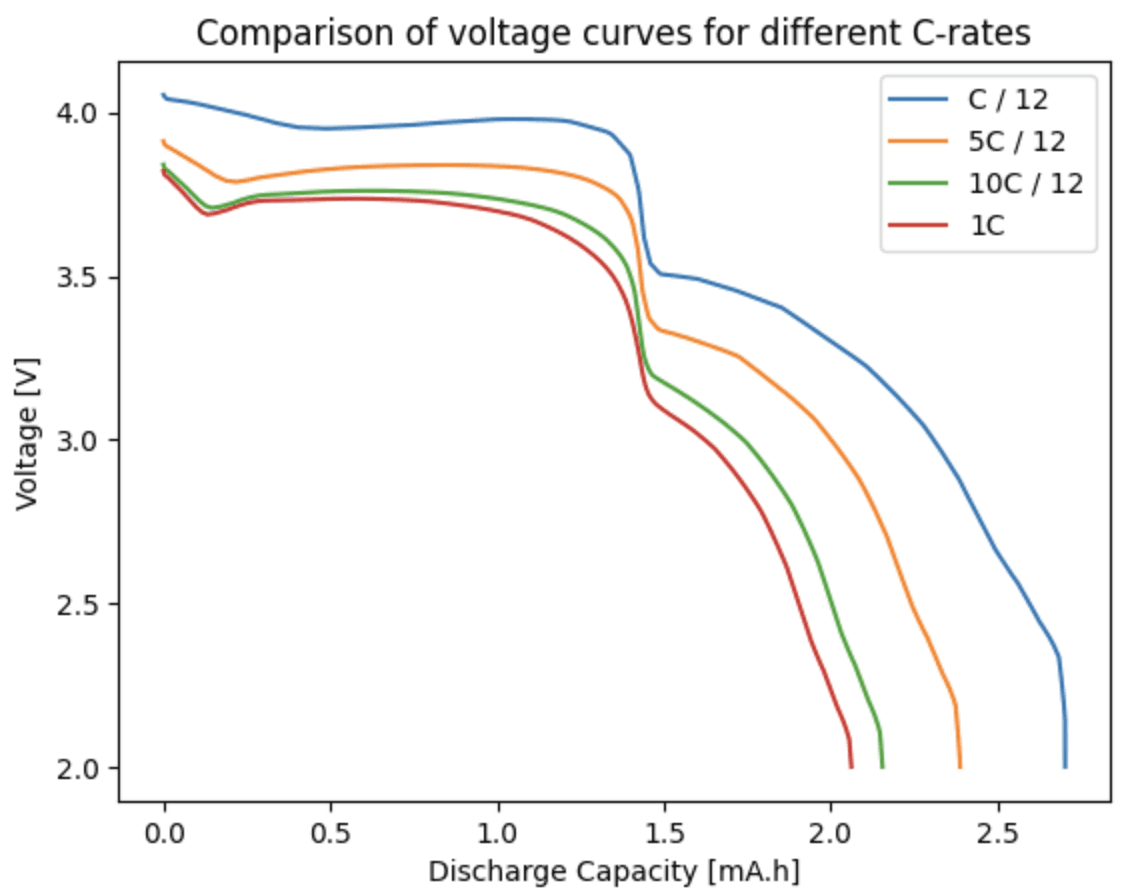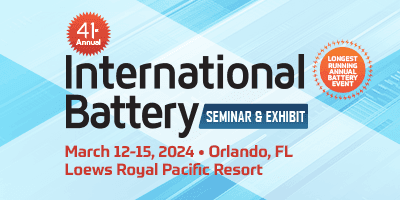Apr 10, 2025
Apr 10, 2025
SEI and Battery Lifespan: A Double-Edged Sword
SEI and Battery Lifespan: A Double-Edged Sword

Battery degradation is a complex process driven by multiple interwoven mechanisms. In our previous post, we explored some of the key contributors to aging, including SEI growth, lithium plating, and mechanical degradation. In this article, we’ll take a closer look at SEI growth, one of the most fundamental yet still not fully understood processes affecting lithium-ion battery lifespan.
The Solid Electrolyte Interphase (SEI) is a thin layer that forms on the surface of the negative electrode (anode) in lithium-ion batteries. A similar process occurs on the positive electrode, but it has received much less attention. The SEI results from electrolyte decomposition and is crucial during the first few charging cycles—a stage known as formation—but it continues evolving throughout the battery’s lifetime. This layer acts as a protective barrier, preventing further electrolyte breakdown while allowing lithium ions to pass through.
A well-formed SEI is essential for stable battery performance:
Prevents further electrolyte decomposition, reducing unwanted side reactions.
Regulates lithium-ion transport, ensuring efficient charge and discharge cycles.
Impacts battery lifespan, as excessive SEI growth consumes lithium and increases internal resistance.
However, the SEI is not a perfect, static layer. Over time, it thickens due to continuous side reactions, trapping lithium ions and increasing resistance, which leads to capacity fade and power loss.
Due to its complexity, SEI growth is not fully understood, and many different modeling approaches attempt to capture different aspects of the process. Typically, physics-based SEI models are defined by coupling additional equations on top of electrochemical models.
One of these additional equations describes the electrochemical reactions that create the SEI. Despite significant research efforts, the precise physics behind SEI formation remain an open question. Many models assume a particular limiting factor for SEI growth—such as solvent diffusion or electron tunneling—so that other effects can be disregarded.
SEI growth also affects the porosity of the negative electrode, as it fills up void spaces originally meant for electrolyte penetration. To account for this, another equation is needed to track porosity changes over time.
While SEI growth is one of the primary degradation mechanisms, it is not the only process affecting the anode. Lithium plating, another major contributor to battery aging, has dynamics that are closely intertwined with those of SEI. In our next post, we’ll dive into lithium plating, its causes, and how it impacts battery performance and safety.
Battery degradation is a complex process driven by multiple interwoven mechanisms. In our previous post, we explored some of the key contributors to aging, including SEI growth, lithium plating, and mechanical degradation. In this article, we’ll take a closer look at SEI growth, one of the most fundamental yet still not fully understood processes affecting lithium-ion battery lifespan.
The Solid Electrolyte Interphase (SEI) is a thin layer that forms on the surface of the negative electrode (anode) in lithium-ion batteries. A similar process occurs on the positive electrode, but it has received much less attention. The SEI results from electrolyte decomposition and is crucial during the first few charging cycles—a stage known as formation—but it continues evolving throughout the battery’s lifetime. This layer acts as a protective barrier, preventing further electrolyte breakdown while allowing lithium ions to pass through.
A well-formed SEI is essential for stable battery performance:
Prevents further electrolyte decomposition, reducing unwanted side reactions.
Regulates lithium-ion transport, ensuring efficient charge and discharge cycles.
Impacts battery lifespan, as excessive SEI growth consumes lithium and increases internal resistance.
However, the SEI is not a perfect, static layer. Over time, it thickens due to continuous side reactions, trapping lithium ions and increasing resistance, which leads to capacity fade and power loss.
Due to its complexity, SEI growth is not fully understood, and many different modeling approaches attempt to capture different aspects of the process. Typically, physics-based SEI models are defined by coupling additional equations on top of electrochemical models.
One of these additional equations describes the electrochemical reactions that create the SEI. Despite significant research efforts, the precise physics behind SEI formation remain an open question. Many models assume a particular limiting factor for SEI growth—such as solvent diffusion or electron tunneling—so that other effects can be disregarded.
SEI growth also affects the porosity of the negative electrode, as it fills up void spaces originally meant for electrolyte penetration. To account for this, another equation is needed to track porosity changes over time.
While SEI growth is one of the primary degradation mechanisms, it is not the only process affecting the anode. Lithium plating, another major contributor to battery aging, has dynamics that are closely intertwined with those of SEI. In our next post, we’ll dive into lithium plating, its causes, and how it impacts battery performance and safety.
Battery degradation is a complex process driven by multiple interwoven mechanisms. In our previous post, we explored some of the key contributors to aging, including SEI growth, lithium plating, and mechanical degradation. In this article, we’ll take a closer look at SEI growth, one of the most fundamental yet still not fully understood processes affecting lithium-ion battery lifespan.
The Solid Electrolyte Interphase (SEI) is a thin layer that forms on the surface of the negative electrode (anode) in lithium-ion batteries. A similar process occurs on the positive electrode, but it has received much less attention. The SEI results from electrolyte decomposition and is crucial during the first few charging cycles—a stage known as formation—but it continues evolving throughout the battery’s lifetime. This layer acts as a protective barrier, preventing further electrolyte breakdown while allowing lithium ions to pass through.
A well-formed SEI is essential for stable battery performance:
Prevents further electrolyte decomposition, reducing unwanted side reactions.
Regulates lithium-ion transport, ensuring efficient charge and discharge cycles.
Impacts battery lifespan, as excessive SEI growth consumes lithium and increases internal resistance.
However, the SEI is not a perfect, static layer. Over time, it thickens due to continuous side reactions, trapping lithium ions and increasing resistance, which leads to capacity fade and power loss.
Due to its complexity, SEI growth is not fully understood, and many different modeling approaches attempt to capture different aspects of the process. Typically, physics-based SEI models are defined by coupling additional equations on top of electrochemical models.
One of these additional equations describes the electrochemical reactions that create the SEI. Despite significant research efforts, the precise physics behind SEI formation remain an open question. Many models assume a particular limiting factor for SEI growth—such as solvent diffusion or electron tunneling—so that other effects can be disregarded.
SEI growth also affects the porosity of the negative electrode, as it fills up void spaces originally meant for electrolyte penetration. To account for this, another equation is needed to track porosity changes over time.
While SEI growth is one of the primary degradation mechanisms, it is not the only process affecting the anode. Lithium plating, another major contributor to battery aging, has dynamics that are closely intertwined with those of SEI. In our next post, we’ll dive into lithium plating, its causes, and how it impacts battery performance and safety.
Battery degradation is a complex process driven by multiple interwoven mechanisms. In our previous post, we explored some of the key contributors to aging, including SEI growth, lithium plating, and mechanical degradation. In this article, we’ll take a closer look at SEI growth, one of the most fundamental yet still not fully understood processes affecting lithium-ion battery lifespan.
The Solid Electrolyte Interphase (SEI) is a thin layer that forms on the surface of the negative electrode (anode) in lithium-ion batteries. A similar process occurs on the positive electrode, but it has received much less attention. The SEI results from electrolyte decomposition and is crucial during the first few charging cycles—a stage known as formation—but it continues evolving throughout the battery’s lifetime. This layer acts as a protective barrier, preventing further electrolyte breakdown while allowing lithium ions to pass through.
A well-formed SEI is essential for stable battery performance:
Prevents further electrolyte decomposition, reducing unwanted side reactions.
Regulates lithium-ion transport, ensuring efficient charge and discharge cycles.
Impacts battery lifespan, as excessive SEI growth consumes lithium and increases internal resistance.
However, the SEI is not a perfect, static layer. Over time, it thickens due to continuous side reactions, trapping lithium ions and increasing resistance, which leads to capacity fade and power loss.
Due to its complexity, SEI growth is not fully understood, and many different modeling approaches attempt to capture different aspects of the process. Typically, physics-based SEI models are defined by coupling additional equations on top of electrochemical models.
One of these additional equations describes the electrochemical reactions that create the SEI. Despite significant research efforts, the precise physics behind SEI formation remain an open question. Many models assume a particular limiting factor for SEI growth—such as solvent diffusion or electron tunneling—so that other effects can be disregarded.
SEI growth also affects the porosity of the negative electrode, as it fills up void spaces originally meant for electrolyte penetration. To account for this, another equation is needed to track porosity changes over time.
While SEI growth is one of the primary degradation mechanisms, it is not the only process affecting the anode. Lithium plating, another major contributor to battery aging, has dynamics that are closely intertwined with those of SEI. In our next post, we’ll dive into lithium plating, its causes, and how it impacts battery performance and safety.


12 Days of Electrochemical Testing
To celebrate the holiday season and the re-release of Ionworks Studio, we featured "12 (business) days of electrochemical testing". Each day we pick a test, give a little bit of information about it, and show you how to run it in Ionworks. 🔋 🎄
Dec 17, 2024


12 Days of Electrochemical Testing
To celebrate the holiday season and the re-release of Ionworks Studio, we featured "12 (business) days of electrochemical testing". Each day we pick a test, give a little bit of information about it, and show you how to run it in Ionworks. 🔋 🎄
Dec 17, 2024


12 Days of Electrochemical Testing
To celebrate the holiday season and the re-release of Ionworks Studio, we featured "12 (business) days of electrochemical testing". Each day we pick a test, give a little bit of information about it, and show you how to run it in Ionworks. 🔋 🎄
Dec 17, 2024


Sodium Ion Battery Model now available in PyBaMM!
This blog post explores the history of SIBs, the intricacies of the new PyBaMM model, and the exciting possibilities it unlocks for the future of energy storage.
Nov 12, 2024


Sodium Ion Battery Model now available in PyBaMM!
This blog post explores the history of SIBs, the intricacies of the new PyBaMM model, and the exciting possibilities it unlocks for the future of energy storage.
Nov 12, 2024


Sodium Ion Battery Model now available in PyBaMM!
This blog post explores the history of SIBs, the intricacies of the new PyBaMM model, and the exciting possibilities it unlocks for the future of energy storage.
Nov 12, 2024


Ionworks Presents at International Battery Seminar
Ionworks CEO Valentin Sulzer presents at the International Battery Seminar in Florida
Mar 12, 2024


Ionworks Presents at International Battery Seminar
Ionworks CEO Valentin Sulzer presents at the International Battery Seminar in Florida
Mar 12, 2024


Ionworks Presents at International Battery Seminar
Ionworks CEO Valentin Sulzer presents at the International Battery Seminar in Florida
Mar 12, 2024


12 Days of Electrochemical Testing
To celebrate the holiday season and the re-release of Ionworks Studio, we featured "12 (business) days of electrochemical testing". Each day we pick a test, give a little bit of information about it, and show you how to run it in Ionworks. 🔋 🎄
Dec 17, 2024


Sodium Ion Battery Model now available in PyBaMM!
This blog post explores the history of SIBs, the intricacies of the new PyBaMM model, and the exciting possibilities it unlocks for the future of energy storage.
Nov 12, 2024
Run your first virtual battery test today
Simulate, iterate, and validate your cell configurations with no lab time required.
Ionworks Technologies Inc. All rights reserved.
Run your first virtual battery test today
Simulate, iterate, and validate your cell configurations with no lab time required.
Run your first virtual battery test today
Simulate, iterate, and validate your cell configurations with no lab time required.
Ionworks Technologies Inc. All rights reserved.
Run your first virtual battery test today
Simulate, iterate, and validate your cell configurations with no lab time required.
Ionworks Technologies Inc. All rights reserved.
